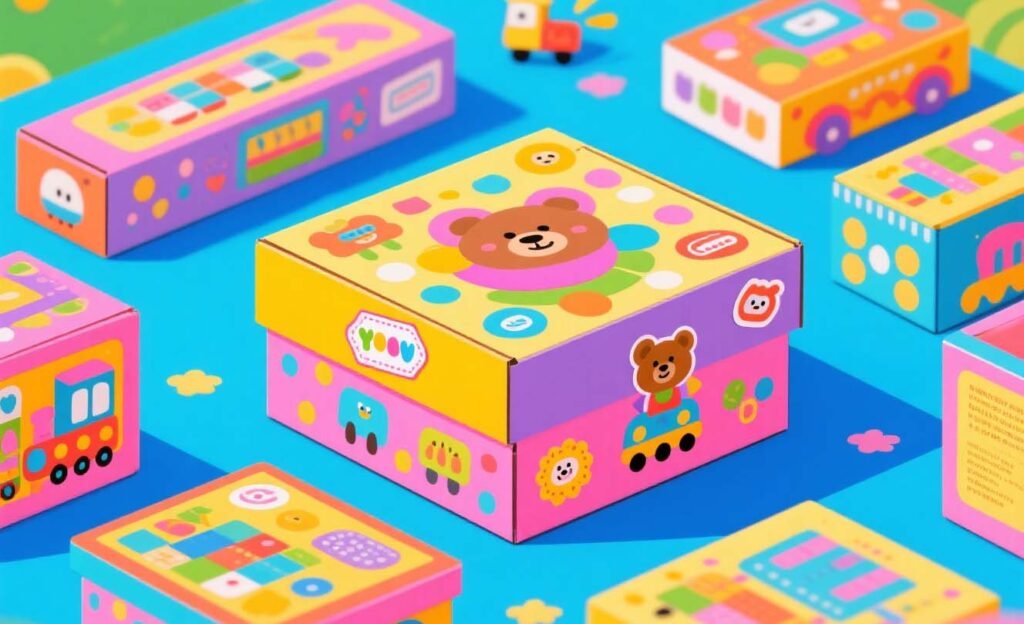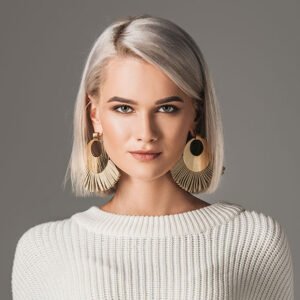When you start researching how to package a toy, you’ll quickly notice there isn’t just one name for “toy packaging.” The umbrella term is toy packaging, but within that, you’ll find a mix of formats you can choose from depending on your product, budget, and brand vibe: window toy packaging (window boxes), blister packs, clamshells, trays and sleeves, mailer-style cartons,litho-laminated display boxes, and more. Each option has its own strengths for protection, shelf impact, and cost—and you can combine them to create a custom toy box that feels perfectly“you.”

The Short Answer and The Practical One
The broad category is toy packaging.
If your box has a clear viewing panel, that’s window toy packaging (often just called a window box).
Clear plastic forms around a toy are blister packs; when the plastic is a hinged, two-piece
shell, it’s a clamshell.
A sturdy printed carton made on corrugated with a photo-quality wrap is a litho-laminated box.
If you design and print it your way, it’s part of the world of custom toy boxes (or a custom toy box when you mean a specific product).
Popular Toy Packaging Types (and when to use them)
1. Window Toy Packaging (aka window boxes)
A paperboard or corrugated toy packaging box with a transparent PET film window—great for letting shoppers see the real product while protecting it. Window boxes are widely used for toys because they balance visibility and sustainability by using mostly paper with a small plastic window. If you want to customize a toy box, you can vary the window’s shape, size, and sides,and add finishes like foil or spot gloss.
Best for: plush, dolls, vehicles, STEM kits, collectibles.
Why brands pick it: boosts shelf appeal and trust by showing the actual toy.
2. Blister Packs and Clamshells
Blister packs hold the toy in a formed plastic “blister” sealed to a printed card (the backer).
Clamshells are a type of blister where the shell folds onto itself via a hinge, sometimes sealed,sometimes snap-closed. They shine for hang-display, theft deterrence, and clear visibility.
Best for: small action figures, accessories, die-cast cars, electronics-style toys.
Why brands pick it: strong product visibility, peg-ready, secure.
3. Blind Boxes (surprise boxes)
Popular with collectibles, the blind box is essentially a fully enclosed box (often with a foil or poly bag inside) so the toy’s identity is a surprise. Great for sets, series, and trading.
4. Tray, Sleeve, and Insert Systems
Many toy packaging boxes use a paperboard tray to hold parts, plus a sleeve to slide over the tray. Add molded pulp or paperboard inserts for protection and neat presentation—especially useful for STEM kits or toys with multiple pieces.
5. Litho-laminated Corrugated (retail display boxes)
If you need the strength of corrugated with high-end print quality, litho-lamination combines a beautifully printed sheet with corrugated board. It’s common for larger toys and collector editions where a premium custom toy box feel matters.
Materials 101: What Your Custom Toy Box Can Be Made Of
● SBS paperboard / folding carton board: crisp printing, common for window boxes and
small to mid-size toys.
● Corrugated board: more rugged; pair with litho-lamination for storefront-ready quality.
● Clear plastics for windows/blisters: PET/APET and rPET (recycled PET) are popular for clarity and recyclability; PVC is still used but can discolor and is less favored for sustainability reasons.
Tip: If you’re aiming for eco-friendly toy packaging boxes, consider paperboard + PET or rPET windows (or even paper-based “cellulose” windows where available). Several major toy companies have publicly shifted away from PVC toward PET and higher recycled paper content,underscoring the trend.
Design Features to Consider (and how to customize a toy box)
If you’re ready to customize a toy box, here are practical dials you can turn:
1. Window choices
Full front window, corner window, multi-side wrap windows—each changes how much of the toy is visible and how “premium” it feels. PET is typical for clarity; you can also pick rPET to increase recycled content.
2. Inserts and fit
Die-cut paperboard, molded pulp, or thermoformed trays keep the toy snug (no rattling = higher quality perception).
3. Opening experience
Magnetic closures, tuck flaps, or tear-strip seals can make unboxing easy and
satisfying—especially important for gifts and collectibles.
4. Print and finishes
Spot UV, soft-touch, foil, emboss/deboss, and matte/gloss combos can elevate shelf presence on custom toy boxes (and photograph beautifully for e-commerce). Window boxes, in particular,take print and embellishment well.
5. Hanging vs. standing
If you plan to hang on pegs, ensure a Euro-slot or reinforced hang hole; for shelves, confirm base stability and footprint. Clamshells and some blisters can do both.
Don’t Forget the Rules: Safety, Labels, and Warnings
Toy packaging isn’t just about looking good; it must follow safety standards and labeling rules.In the United States, toys must meet ASTM F963 requirements under the Consumer Product Safety Improvement Act (CPSIA). Many products also require choking hazard warning labels if they contain small parts—and those same warnings must appear in advertising.
Selling in the European Union? Toys must comply with the EU’s Toy Safety framework (often demonstrated via EN 71 testing) and carry the CE mark to show conformity. Age grading,warnings, and flammability limits are part of the picture. Work with your supplier and a lab to determine which sections apply to your toy and packaging.
Compliance checklist to discuss with your packaging partner
● Correct age grading and any required small parts or magnet warnings
● Permanent placement of labels (won’t rub off)
● Material safety (inks, coatings, adhesives)
● Tamper evidence where appropriate (especially for electronics or collectibles)
● Import documentation and test reports ready for market surveillance or customs
Which Packaging Should You Pick?
Use this quick rule-of-thumb matrix:
- You sell on shelves and want instant trust: Window toy packaging—let shoppers see
the real toy.
You need a peg display and strong theft deterrence: Clamshell or robust blister. - You’re building a collectible series with trading culture: Blind boxes with consistent
brand art. - Your toy is heavy or oversized: Litho-laminated corrugated with a fitted insert.
- You’re going for an eco-forward message: Paperboard box + rPET window (or no
window) and molded-pulp inserts.
Cost, Speed, and MOQ Tips (so you can plan smart)
Tooling & setup: Blisters and clamshells need thermoform tooling; window boxes usually don’t, but add time for window “pick-and-place” application.
Freight efficiency: Flat-packed cartons save volume; clamshells can be bulky unless nested tightly.
Print runs: Offset printing loves scale; for short runs, digital can be a faster route on corrugated or cartonboard (ask about hybrid workflows).
Ready to Design Your Custom Toy Box?
If you’re choosing between custom toy boxes, window toy packaging, or a blister/clamshell
route, always remember the abovementioned before getting started.
Let’s make packaging that parents trust, kids love, and retailers can’t help but feature.
FAQ: Quick Hits You Might Be Wondering About
Is window toy packaging more expensive than a plain box?
Usually, yes—because of the extra window film and application step—but it can increase sales by showcasing the toy clearly, which is why many brands choose it.
Is a clamshell the same as a blister pack?
A clamshell is a type of blister with a hinged shell (often two halves), while a standard blister uses a card backer.
What makes a box a “custom toy box”?
Any time you specify size, structure, materials, print, and finishes to fit your brand and product,you’re creating a custom toy box—from a simple straight-tuck window box to a fully engineered collector case.
Are there legal rules for labels on toy packaging?
Yes. In the U.S., check ASTM F963 under CPSC guidance and apply small parts warnings
where required. In the EU, confirm EN 71 compliance and apply the CE mark.


